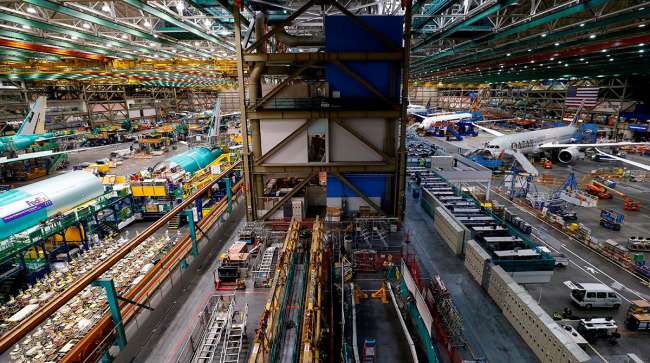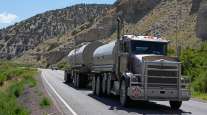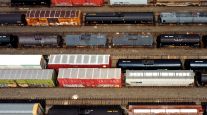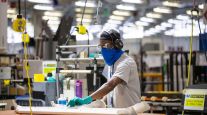Associated Press
Economy Slipped 1.6% to Start Year

[Stay on top of transportation news: Get TTNews in your inbox.]
WASHINGTON — The U.S. economy shrank at a 1.6% annual pace in the first three months of the year, the government reported June 29 in a slight downgrade from its previous estimate for the January-March quarter.
It was the first drop in gross domestic product — the broadest measure of economic output — since the second quarter of 2020, in the depths of the COVID-19 recession, and followed a strong 6.9% expansion in the final three months of 2021. Inflation is running at 40-year highs, and consumer confidence is sinking.
Last month, the Commerce Department had pegged first-quarter GDP growth at 1.5%. But on its third and final estimate June 29 the department said consumer spending — which accounts for about two-thirds of economic output — was substantially weaker than it had calculated earlier, growing at a 1.8% annual pace instead of the 3.1% it estimated in May.

The Transport Topics Top 100 For-Hire Carriers list ranks the largest players in the trucking industry. In this episode, the makers of this year’s list discuss how it came together and what it means for the supply chain. Tune in above or by going to RoadSigns.TTNews.com.
That was partly offset by a revision to its calculation of business inventories. Commerce said that reduced restocking of company shelves had shaved less than 0.4 percentage points from first-quarter growth, down from the 1.1 percentage point hit it estimated in May.
Still, the negative GDP number probably doesn’t signal the start of a recession, and economists expect growth to resume later this year.
The first-quarter dip doesn’t say much about the underlying health of the economy: A bigger trade deficit — reflecting Americans’ appetite for foreign goods and services — slashed 3.2 percentage points off the change in January-March GDP.
Business investment grew a healthy 5%.
Still, the U.S. economy, which has enjoyed a brisk recovery from 2020’s short but devastating coronavirus recession, is under pressure as the Federal Reserve raises interest rates to rein in inflation that’s running at a 40-year high.
The rebound caught businesses by surprise, and an unexpected surge in customer orders overwhelmed factories, ports and freight yards, leading to shortages, delays and higher prices. In May, consumer prices rose 8.6% from a year earlier, the biggest year-over-year jump since 1981.
Want more news? Listen to today's daily briefing above or go here for more info
In response, the Fed sped up its plan to raise interest rates, hiking its benchmark short-term rate by three-quarters of a percentage point, the heftiest increase since 1994. The Fed hopes to achieve a so-called soft landing — slowing economic growth just enough to bring inflation down to its 2% target without causing a recession.
Higher borrowing costs are already pinching the housing market.
For the full year, the economy is still expected to turn in respectable growth: 2.5%, according to the World Bank.




